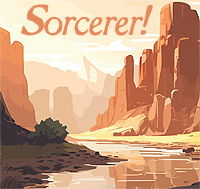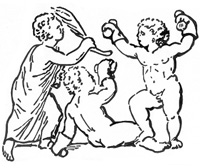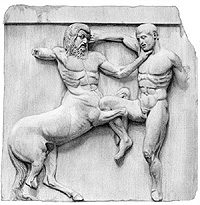“It turned out that the aristocracy of England could not supply English immigrants who, under the indenture plan, were willing to lose their freedom for life. As land [in America] was easily obtained, those imported as indentured servants to be the tenants of manors drifted away to the frontier. The owners of the manors had a choice of selling off parts of their estates to those who would buy them, or buying slaves and transforming their estates into plantations.”
-A Unit History of the United Sates, Hamm, Bourne & Benton, 1935, D.C., Heath and Company, page 47
A tenant laborer is a sharecropper, a poor landless person who is permitted to live on the land he works under a contract that keeps him indebted to the landowner at year’s end. This tenant may be a farmer, a lumberjack a miner or a domestic servant or workhouse laborer. This was the plight of most Europeans in the old country and would become the plight of most Southern Americans [white and black] after the abolition of slavery. To be a tenant laborer, miner or farmer was a death sentence for the body and soul. This was known to the victims of servant trafficking in Early America. Those who thought they were not strong enough to last the 7-14 years of enslavement either ran away or committed suicide, sometimes right on the dock at Jamestown. Those who survived their service were penniless, landless, without tools and employment, their only possession a set of signed indenture forms declaring their freedom, and a pass permitting them to leave the colony. If these papers were lost or taken they could simply be sold again.
What were freed servants to do?
They could, if they had the strength, skills, companions and tools, escape to the wilderness, fight Indians and build a life. This was possible if one had the rare fair master who honored his pledge to release a servant with tools or the money to acquire same. This grim prospect was what fueled the expansion of America as these folks planted frontier settlements where escaped servants might join them. That this occurred often is attested to by the anti-slavery laws passed by those free poor who flooded into the Ohio Valley after the Revolution in 1783.
They could wander as a migrant laborer.
They could stay on as a tenant laborer, which meant slavery for life.
They could sell themselves back to this master for another term, which seems to have been common.
They could sign with a ship’s captain if they had the skills.
They could linger in the vicinity hopeful for wage labor opportunities.
If they were very healthy and young and could find a tribe of Indians needing to recoup losses from disease or war, they could seek adoption.
Or as often happened when masters stopped hiring and rebuying servants due to old age or illness, they could seek the shelter of a sick house, maintained by some of the few decent masters among the wealthy landowners, where wage servants such as Nancy Barton, [1] owned and then retained as a wage servant by the Whipples of New England, would be detailed by observant Christian masters to care for their cast-off servants. A rarely understood aspect of servitude was the fear that the master would not be willing to re-purchase, or retain as a wage servant, the person who had worked off their term due to illness, malice or pure economics, such as the cheap cost of kidnapped children, convict laborers and pressed [abducted] men.
What all of these obstacles to survival as a free person beyond one’s term of indenture set up was a cultural filter in which the various obstacles to survival [2] and freedom discussed above—with the savage wilderness of the Appalachian Mountains [3] being the final sieve in the filter—that saw the original English, Welsh, Cornish, Scottish, Scotch-Irish, Irish and German underclass of America split into four bodies as westward migration into aboriginal territory preceded the expansion of the servile State:
1. The dependent Caucasian poor who remained as a class of wage servants and criminals up through the industrial era to the present.
2. Piedmont “rednecks” who remained in the foothills of the Appalachians as small landowners.
3. Hillbillies and hicks, who remained in the Appalachians.
4. Western “red state” Americans migrating from these three sources, who would generally favor local autonomy over federal control in their political sentiments, bringing their cultural sympathies in line with groups 2 and 3, rather than group 1, who have generally stayed behind in Eastern cities and suburbs in support of the Elite they remain beholding to for employment.
Notes
1. Frozen Love, Vincent C. Spiotti, Muzzleloader Magazine, November/December 2016, pages 41-8 Spiotti mistakes unfree servants as wage servants, translating the servile term as “Employee,” though in the case of some of Whipple’s servants this mistake was rendered inevitable. The Whipple’s were a sterling example of the rare, honorable Christian master who looked to Scripture and Gospel as a guide for handling their human property and did what they could to employ and care for former servants after their contract ran out. Other than the modern assumption that all servants were free wage earning employees, this article is excellent.
2. In the 1600s between 75-95% of servants failed to survive their first term, this on top of the 25% middle passage death rate. By the late 1700s survival rates are much harder to determine but were certainly much better.
3. The Mississippi might be seen as the final sieve in the filter, with servile state conditions rarely blossoming outside of the major federal hubs and the West Coast to where by stages, shipping, the Transcontinental Railroad, the Interstate Highway System and finally airlines, enabled direct immigration from the servile East Coast.
Under the God of Things











